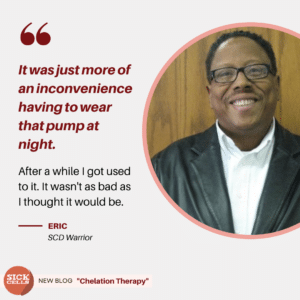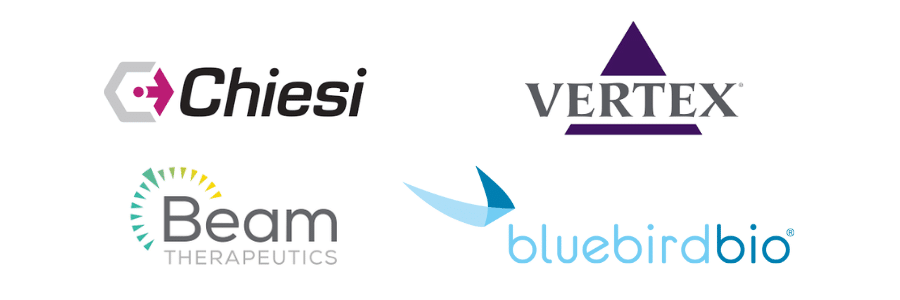Chelation Therapy with Eric Kirkwood
Sick Cells sat down with Eric Kirkwood, sickle cell warrior and advocate, to discuss his experience with chelation therapy and why it’s so important for those in the SCD community.
We know that everyone’s experience with sickle cell is unique. The ups, the downs, the everyday life and steps taken to maintain health look different for everyone. That’s why we spoke with Eric Kirkwood to discuss a treatment that’s helpful for his SCD maintenance: iron chelation therapy – a process that removes excess iron from the body with special drugs. It is often necessary for sickle cell warriors who regularly receive blood transfusions. The process prevents a condition called “iron overload.”
Iron overload is a condition in which your body stores too much iron. When blood transfusions and exchange transfusions put healthy red blood cells into the body, it also puts in more iron than your body needs. Iron overload is a serious condition and can be dangerous for a person. This is why your doctor will start you on an iron chelator, to remove the excessive iron from your body.
Some sickle cell warriors require simple blood transfusions or exchange transfusions as their maintenance care plan, and Eric’s very familiar with the process. In fact, frequent exchange transfusions play a significant role in helping him to maintain his health in addition to drug therapies like Hydroxyurea. For years, Eric has relied on chelation therapy to remove excess iron from his body. And while chelation therapy is a fairly manageable process today, it wasn’t always so simple.
To find a collection of information on new curative therapies, check out our blog on SCD treatments.
Eric’s Experience with Chelation Therapy

“It was in the early 2000s,” said Eric as he described what used to be a much more invasive form of chelation therapy that required an 8-hour infusion via a pump 5-7 days out of the week. He had to implant a needle in his abdomen every time he needed to start the process. He was nervous at first, but he eventually got used to it.
“It was just more of an inconvenience having to wear that pump at night,” said Eric. “After a while, I got used to it. It wasn’t as bad as I thought it would be.”
Today, chelation therapy is less cumbersome for people. In fact, iron chelators can be taken orally to treat chronic iron overload caused by blood transfusions.
“It’s very helpful,” said Eric. “I have more energy and I feel so much better now than I’ve felt in a long time. And I’m taking the Hydroxyurea along with it, so I think that kind of helps with it as well to extend the life of the transfusions.”
Eric shared some parting advice for those who get frequent transfusions. A reminder that it’s essential to stay mindful of your health and advocate for your well-being alongside your team of physicians.
“Your hematologist should monitor your iron. If you’ve been getting any kind of transfusions, be sure. Have your iron monitored because you don’t want to get iron overload.”
Chelation therapy has changed over the years. We listed some of the available therapies on the market.
Available Chelation Therapies:
Thank you to Eric for sharing his experience with chelation therapy. Always consult your doctor about specific drugs and therapies needed to manage sickle cell disease. This blog was sponsored by Cheisi USA, a sponsor of the Faces of SCD Storytelling Program.
Published December 2022
